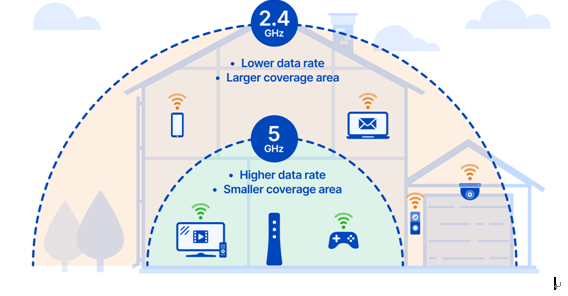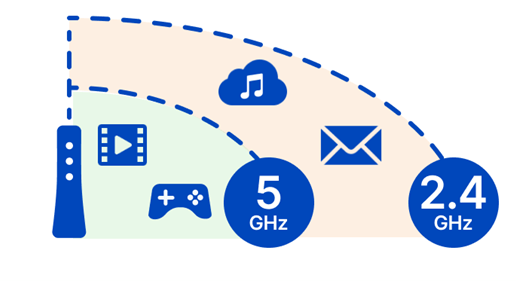The location of home gateways and antenna angles of many users are unreasonable, which affects the coverage performance of Wi-Fi
Wifi band steering detects what a wireless device supports and automatically steers it to the best available frequency band when connecting to a Wifi network.

Insufficient Wi-Fi bandwidth, poor mobile performance, and
time slows down overall performance
Band steering is a functionality that automatically steers anyone connecting to a wireless network to the best frequency band available and supported, thereby optimizing performance for the client.
What are the advantages and disadvantages of 2.4G Wi-Fi and 5G Wi-Fi?
The carrier frequency used by the wireless local area network is divided into two parts, the 2.4GHz frequency band and the 5GHz frequency band, and the frequency corresponding to each channel is actually the center frequency of the channel. Compared with the 2.4GHz frequency band, the 5GHz frequency band has larger bandwidth, lower latency, and more stable network. The range of the 5GHz frequency band is undoubtedly much wider than that of 2.4GHz, and the coverage is actually 4.9GHz to 5.8GHz
The main propagation mode of electromagnetic waves in the 2.4GHz and 5GHz frequency bands is straight line propagation. When encountering obstacles, various phenomena such as penetration, reflection, and diffraction will occur. Among them, penetration is the main phenomenon, and only a small part of the signal will reflect and diffraction. However, the electromagnetic wave signal will lose a lot of energy when it penetrates the obstacle. Sometimes the energy is exhausted before it penetrates the obstacle. As a result, the receiving end receives the signal through reflection and diffraction. Signal for passing an obstacle.
To sum up the above content, the wireless environment in the 5GHz frequency band is better, the network speed is stable, and can support higher speeds; the wireless environment in the 2.4GHz frequency band is relatively poor, if there are too many devices around, the network speed may not be stable, but it can cover a longer distance .
Currently, dual-band routers support both the 5GHz and 2.4GHz bands, so you don’t have to worry about buying a router, and according to the actual situation, the network itself will have a greater impact on the user experience.
What Happens When You Don’t Have Band Steering?
If your equipment does not support band steering, it is up to the user or the device to select the correct/best frequency band. Many routers are set up so by the vendor or service provider so that one has separate networks with different names and credentials for 5 GHz and 2.4 GHz. It is then up to the user to know which network and thus which frequency band to connect to.

What Does Band Steering Do?
Band steering means you don’t have to worry about which frequency band is supported by the different computers and devices that you use, because you have a router or other wireless access point that can make these assessments and direct each device to the appropriate frequency band.
Band steering is often part of a more comprehensive functionality called client steering, which ensures that all clients (devices) connect to the wireless access point that provides the best performance.